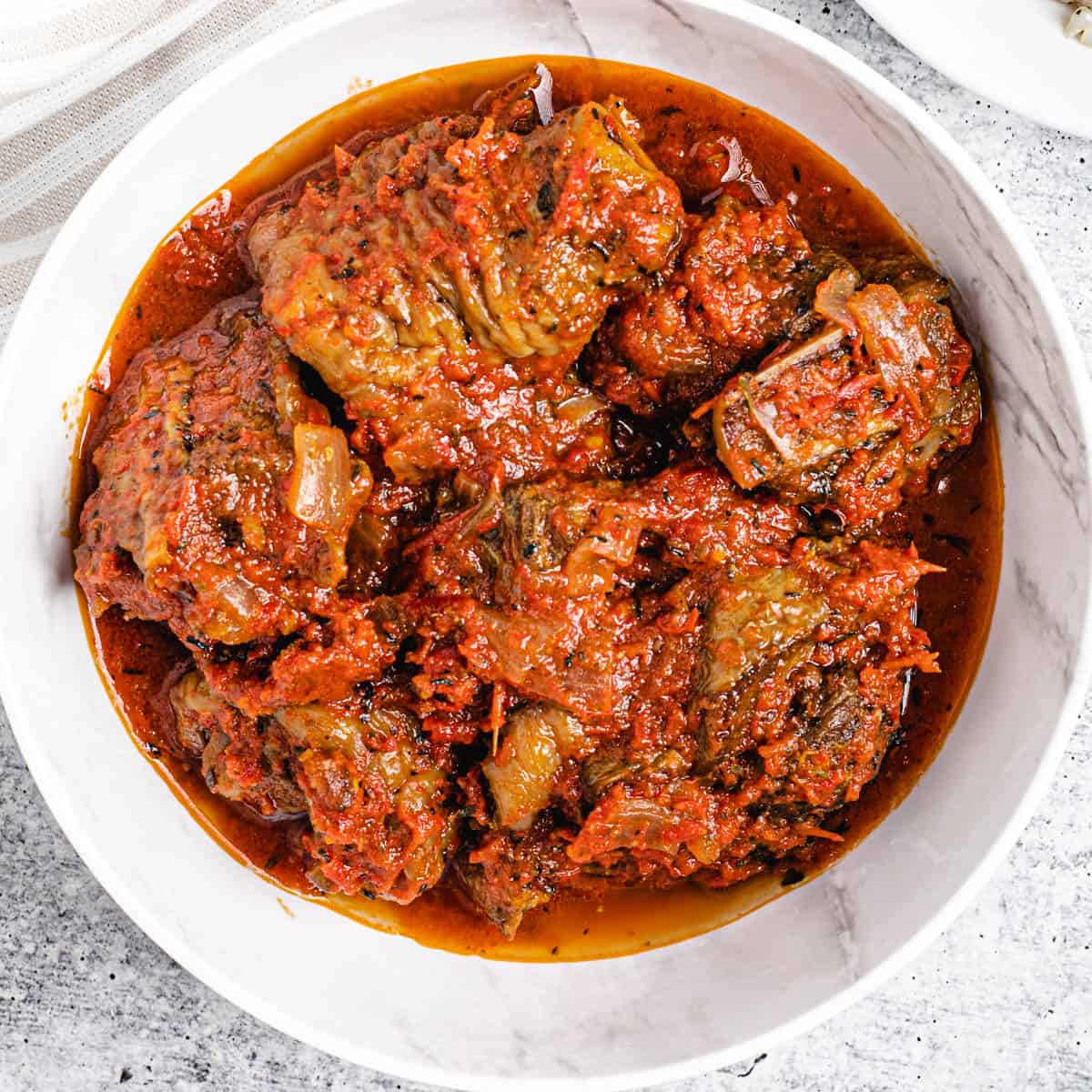Zimbabwean Gastronomic Wonders: Butternut Nhopi, Bota, and Kapenta Delights
Introduction:
Nhopi, a traditional Zimbabwean snack, receives a delightful twist with the incorporation of butternut squash in this recipe. Bursting with flavors and rich in nutrients, this butternut nhopi is a perfect treat for any time of the day. Easy to make and immensely satisfying, it brings back fond memories of childhood indulgence.
Ingredients:
- 2 medium-sized butternuts
- 1 tablespoon margarine or butter (according to preference)
- 2 tablespoons brown sugar
- 2 tablespoons peanut butter
- 60ml fresh milk
- Pinch of salt
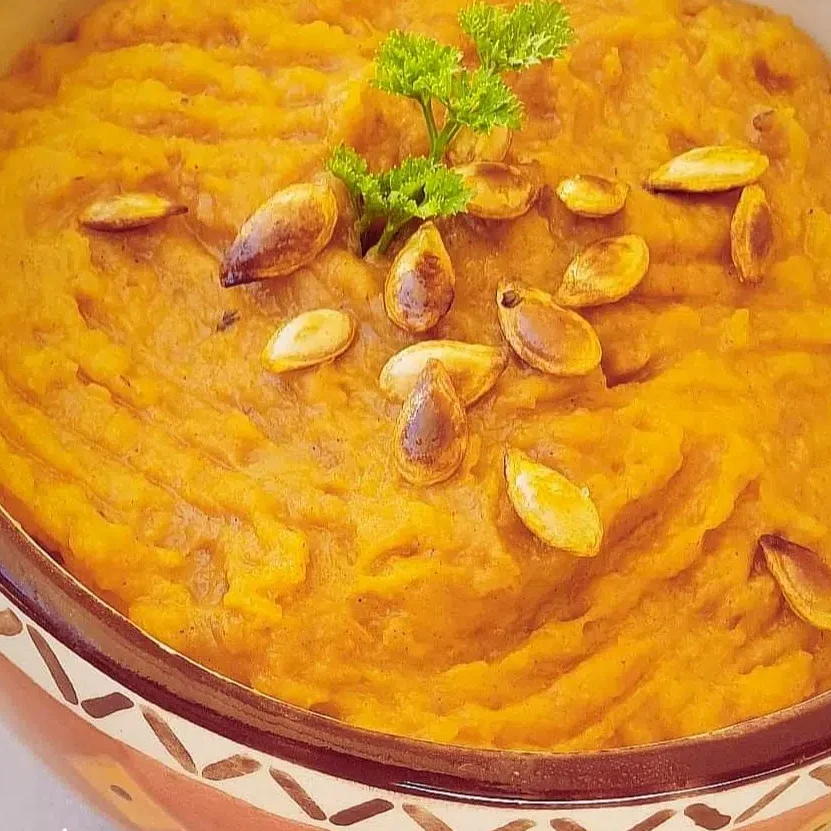
Instructions:
- Prepare the Butternuts: Wash the butternuts thoroughly, then peel them. Cut the butternuts into rough chunks, removing the seeds.
- Cook the Butternuts: Place the butternut chunks in a pot, and add water along with the brown sugar. Sprinkle a pinch of salt over the mixture. Cover the pot and cook the butternuts for approximately 20 minutes, or until they become soft and can be easily pierced with a fork.
- Mash the Butternuts: Once the butternuts are soft, mash them using a fork or a potato masher. Add the margarine or butter to the mashed butternuts.
- Incorporate the Remaining Ingredients: Pour in the fresh milk and continue mashing the mixture. Gradually add the peanut butter while continuing to mash until everything is well combined.
- Serve: Your butternut nhopi is now ready to be enjoyed! Serve it warm or at room temperature as a delightful snack or light meal.
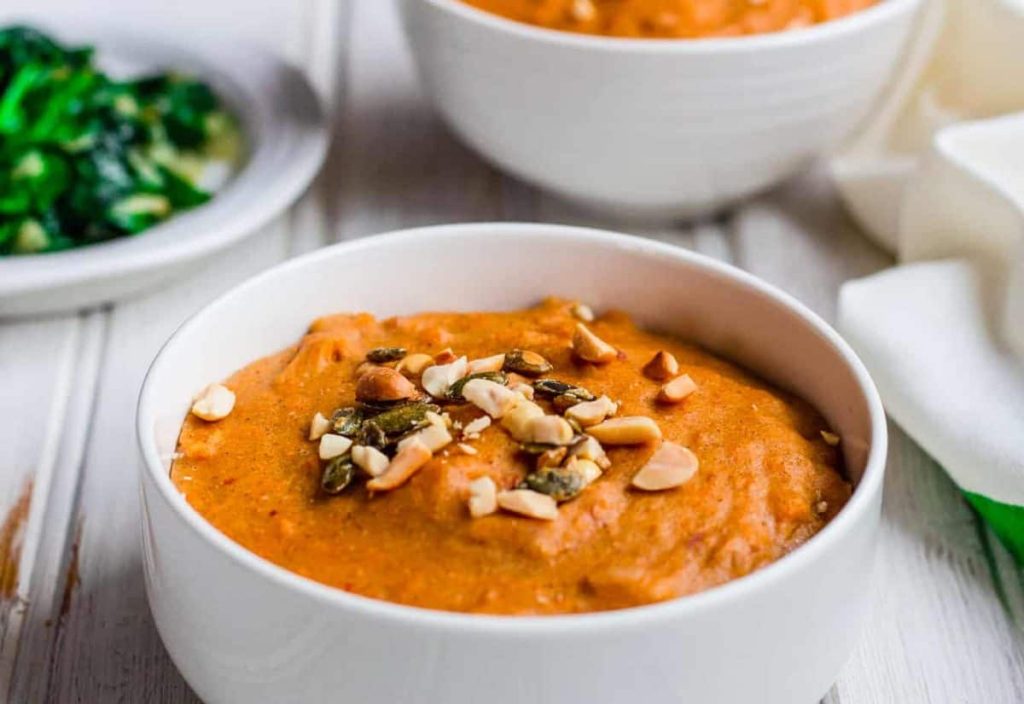
Nutritional Benefits:
- Butternuts are a rich source of dietary fiber, folate, and vitamin A, contributing to heart health and aiding in digestion.
- Peanut butter provides protein, helping to keep you feeling full for longer periods.
- Fresh milk adds calcium, promoting strong bones and teeth.
Conclusion:
Butternut Nhopi offers a wholesome and nutritious snack option that satisfies both the taste buds and the body’s nutritional needs. With the goodness of butternut squash, peanut butter, and fresh milk, it’s a delightful treat that brings comfort and nostalgia with every bite. Enjoy this Zimbabwean classic and relish in its simple yet irresistible flavors. Bon appétit!
Bota Recipe and Origin Story (Cornmeal Porridge with Peanut Butter)
Origin Story:
Bota, also known as une dovi, holds a special place in Zimbabwean cuisine. It’s a humble yet nourishing dish made from cornmeal (known as “upfu” in the Shona language). Cornmeal, along with other milled grains like sorghum, millet, or rapoko (finger millet), forms the foundation of this comforting porridge.
In times past, when resources were scarce, Bota sustained families. It was a staple for those who couldn’t afford more elaborate meals. The simplicity of Bota reflects both resilience and resourcefulness.
Recipe:
Ingredients:
- 1 cup cornmeal (maize meal)
- Water (for cooking)
- Salt (to taste)
- Peanut butter (as desired)
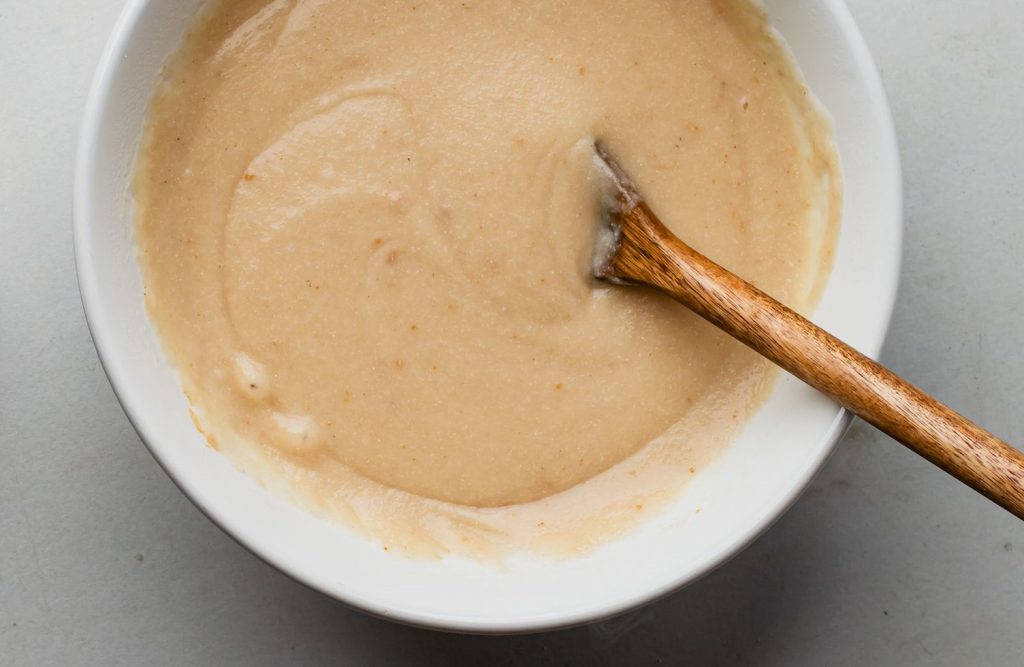
Instructions:
- Prepare the Cornmeal Base:
- In a saucepan, bring water to a boil.
- Gradually add the cornmeal, stirring continuously to prevent lumps.
- Reduce the heat and let it simmer, stirring occasionally, until the mixture thickens. Adjust the water quantity to achieve your preferred consistency.
- Add Salt:
- Season the cornmeal with a pinch of salt. Adjust according to your taste.
- Incorporate Peanut Butter:
- Stir in a generous dollop of peanut butter. The creamy richness of peanut butter adds flavor and depth to the porridge.
- Continue cooking for a few more minutes, allowing the flavors to meld.
- Serve Warm:
- Bota is traditionally served warm.
- Enjoy it as a comforting breakfast or a light meal.
Variations:
- Some versions of Bota include additional ingredients like sugar or honey for sweetness.
- Feel free to adjust the thickness by adding more or less water during cooking.

Certainly! Let’s wrap up our Bota journey with serving tips and a delightful conclusion.
Serving Bota:
- Warm and Comforting:
- Bota is best enjoyed warm. Serve it fresh off the stove, allowing its creamy texture and flavors to envelop you.
- Use a deep bowl or a traditional wooden dish (if available).
- Toppings and Garnishes:
- Drizzle a little extra peanut butter on top for richness.
- Sprinkle with crushed roasted peanuts or sesame seeds for added crunch.
- Pairings:
- Bota pairs beautifully with a cup of Maheu (maize meal drink) or a glass of cold water.
- For a heartier meal, serve it alongside a vegetable relish or stew.
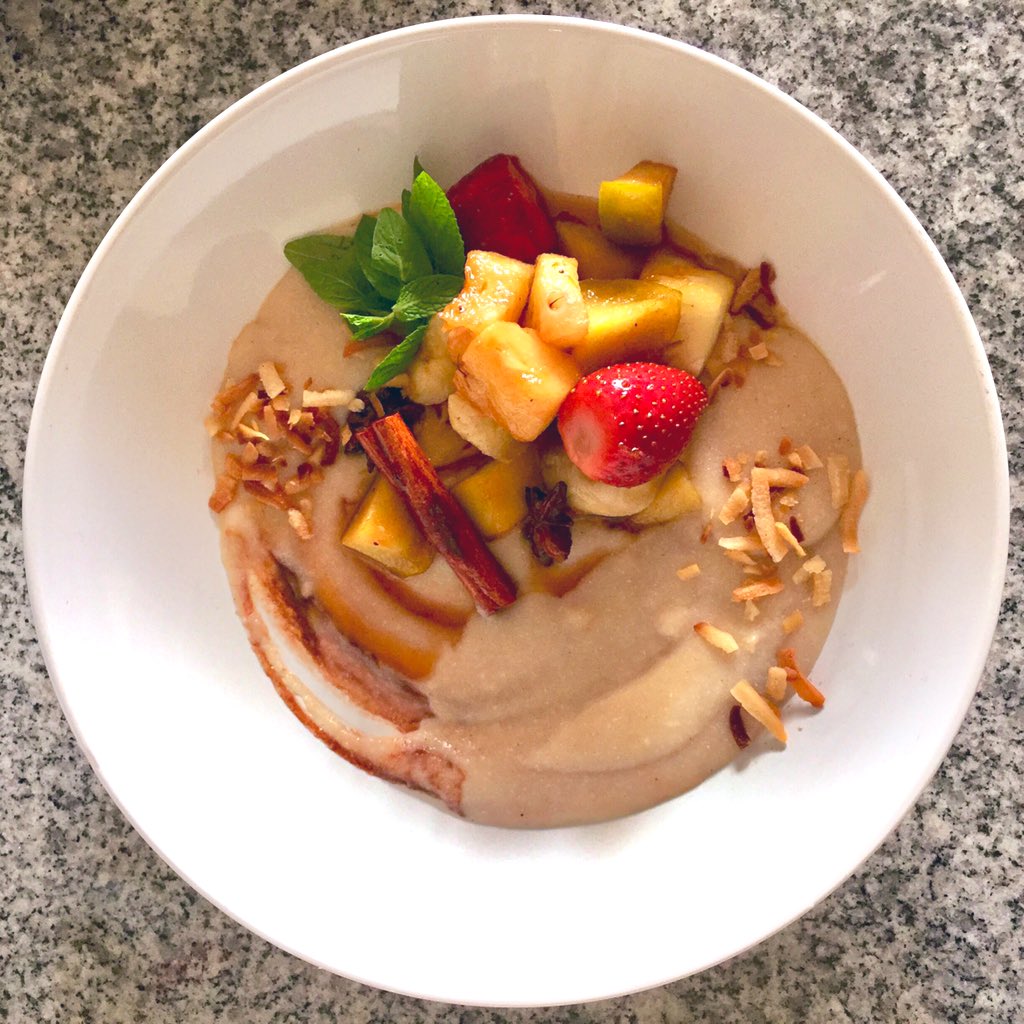
Conclusion:
Bota transcends its humble ingredients. It’s more than just a porridge—it’s a connection to Zimbabwean heritage, resourcefulness, and the warmth of shared meals. As you savor each spoonful, remember the resilience of those who cherished this dish through generations.
Kapenta Recipe – A Traditional Fried Fish Dish in Zimbabwe
Kapenta, also known as matemba, is a popular dish in Zimbabwe, in countries like Zimbabwe and Zambia. These small dried fish are native to Lake Tanganyika and are enjoyed in various ways. Let’s dive into the steps for preparing this delicious Fried Kapenta:
Fried Kapenta Recipe
Prep Time: 30 min
Total Time: 30 mins
Servings: 1 person
Cooking method: Fry
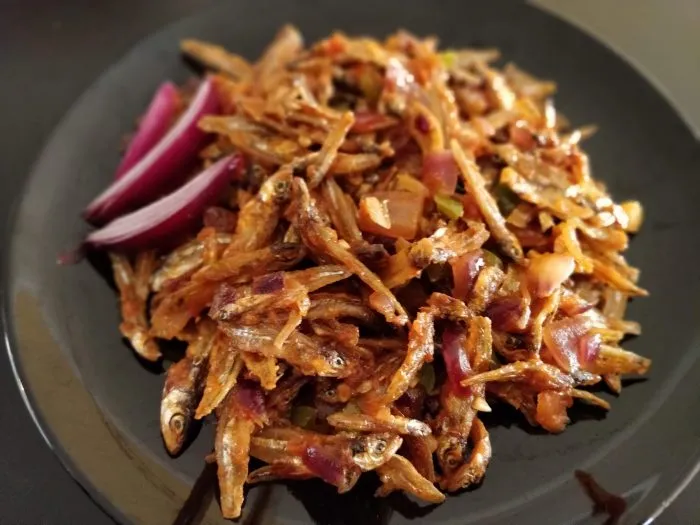
Ingredients:
- 1 cup dried kapenta
- 1 medium onion, chopped
- 1 large tomato, chopped
- Green pepper (quantity as desired)
- 1 tsp curry powder
- 3 tablespoons olive oil
- Salt to taste
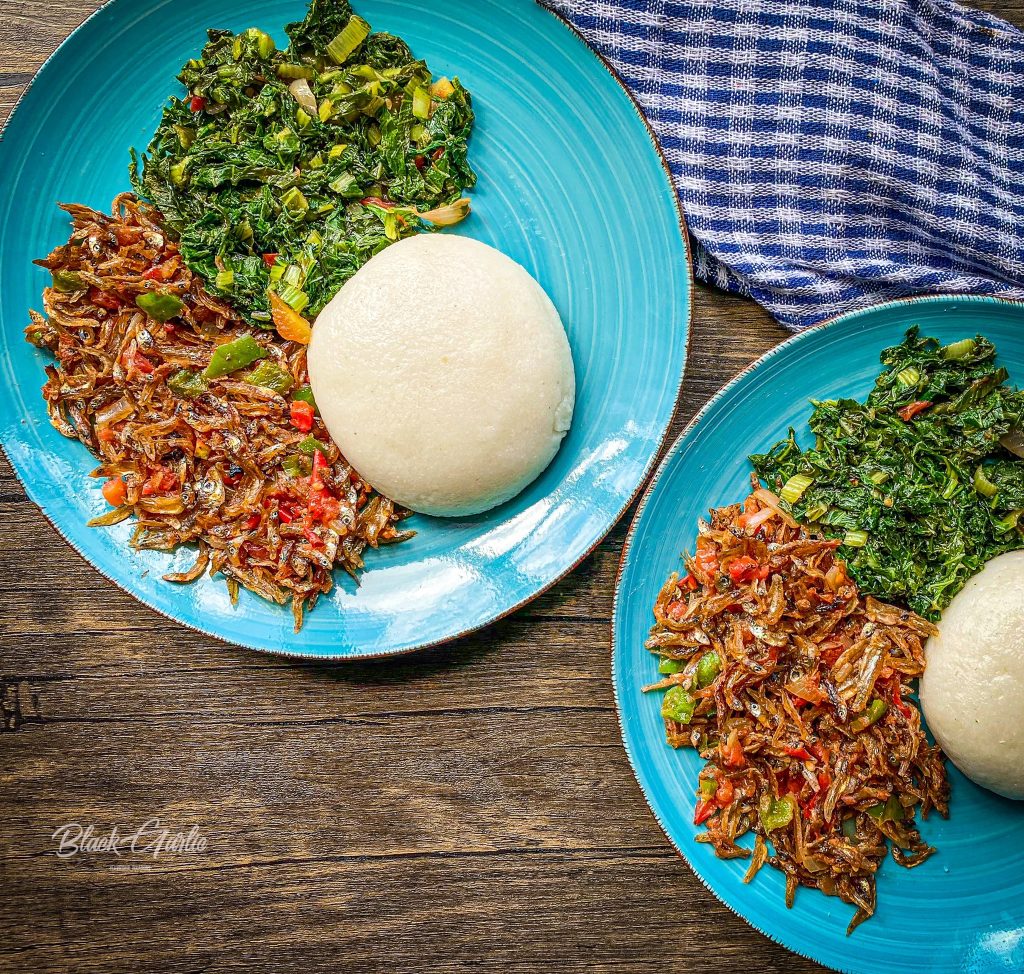
Directions:
- Clean and Soak the Kapenta:
- Begin by cleaning the dried kapenta. Soak them in warm water for about 10 minutes to remove any fish residue.
- After soaking, remove the kapenta from the water and rinse them under cold tap water.
- Pat dry the fish using a clean cloth or paper towel.
- Fry the Kapenta:
- Heat the olive oil in a saucepan or frying pan.
- Add the kapenta to the hot oil and gently fry them until they turn slightly brown. This step helps enhance their flavor and crispiness.
- Seasoning:
- Sprinkle the kapenta with curry powder, fish spice, and chili (adjust the chili amount based on your preference).
- Stir well to evenly coat the fish with the spices.
- Add Onions and Tomatoes:
- Add the chopped onions to the pan and continue frying until they become translucent.
- Next, add the chopped tomatoes. Continue frying until the tomatoes are cooked and softened.
- Green Pepper and Final Fry:
- Toss in the chopped green pepper (you can adjust the quantity according to your taste).
- Fry everything together for a few more minutes, allowing the flavors to meld.

Simmer and Serve:
- Let the kapenta simmer in the flavorful juices for a few additional minutes.
- Serve your delicious fried kapenta with your choice of starch. It pairs wonderfully with sadza (also known as nshima or nsima) or rice
Related Reading Zimbabwean Culinary Delights: Maputi Snack, Boerewors Street Food, and Umxhanxa Soup
